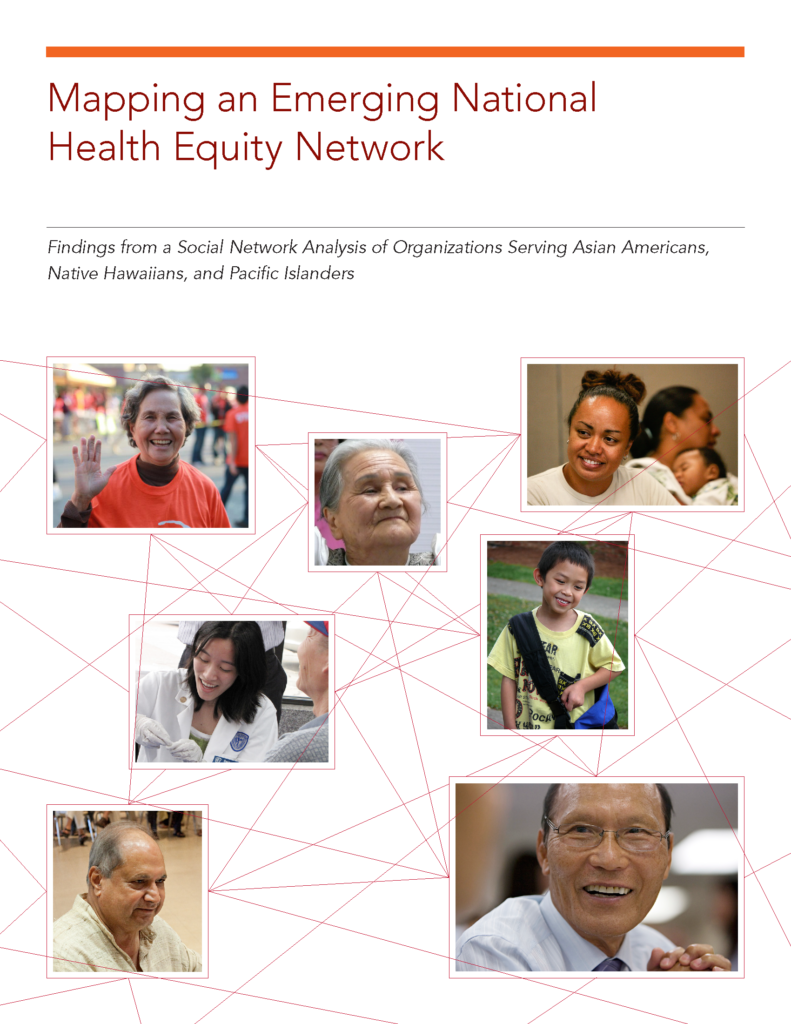Since 2007, the W.K. Kellogg Foundation has invested more than $20 million to support development of health equity collaboration within and across AA and NHPI communities throughout the nation. As a result of this investment – in partnership with the Asian Pacific Islander Health Forum (APIAHF) and Social Policy Research Associates (SPR) – significant learning has already been surfaced focusing on the unique opportunities and challenges of building health equity collaboratives within the AA and NHPI population.
In 2013, the Kellogg Foundation commissioned SPR to expand a social network analysis of a closed group of APIAHF-funded grantees, to a broader national network of organizations working to advance the health and well-being of AA and NHPI communities. Through this expanded focus, the hope was to shed light on how this rapidly growing racial group is currently organized to advance health equity, as well as inform opportunities for strengthening this emerging movement of leaders from around the country.
The social network analysis findings presented in this paper are informed by two administrations of an online survey that were conducted over the course of a year (April 2013 to May 2014) and that involved “snowball sampling,” originating with the core group of 47 organizations supported by the APIAHF. These grantees were asked to provide basic organizational demographic information, identify who they partnered with in their efforts to advance the health and well-being of AA and NHPI communities, and to rate their relationships with these partners using a four-point interaction scale ranging from no interaction to collaboration. These identified partners were then surveyed for the same information. Based on these two waves of survey administration, a total of 598 organizations and individuals were invited to complete the survey, with 256 completing the survey in full (42.8% response rate). In total, 1,470 organizations were ultimately identified through this mapping process.
While we present some findings on the broader network of 1,470, unless noted, the findings reported focus on the 256 organizations that completed the survey in full (represented by colored nodes with the network maps) and for whom we have complete demographic and networking information. These 256 organizations represent the vast majority of organizations that comprise the core of the network; as such, in analyzing this group, we hope to gain some insight about the network as a whole.

